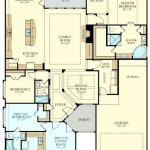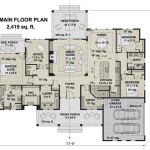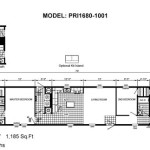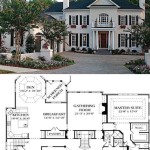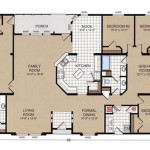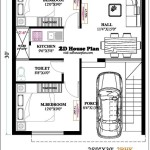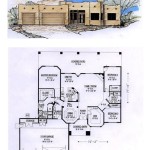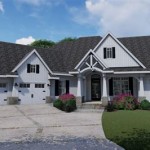Floor Plans for Manufactured Homes: A Guide to Choosing the Right Layout
Manufactured homes, also known as mobile homes, offer a cost-effective and practical housing solution. They are constructed in factories, transported to the site, and placed on a foundation. One of the key considerations when choosing a manufactured home is the floor plan. The layout of a floor plan significantly impacts the overall functionality and livability of the home. This article provides a comprehensive guide to understanding floor plans for manufactured homes, exploring different types of layouts, and highlighting essential factors to consider during the selection process.
Types of Floor Plans
Manufactured homes are available in a wide variety of floor plan configurations, catering to different lifestyles and preferences. The most common types of floor plans include:
- Single-Wide: These are the most basic floor plans, typically ranging from 12 to 24 feet wide. They are suitable for individuals or small families and offer a compact living space.
- Double-Wide: Double-wide floor plans combine two sections, resulting in a wider and more spacious home. They offer greater flexibility for larger families or those seeking more living space.
- Triple-Wide: These floor plans are even more expansive, integrating three sections. They provide ample room for multi-generational families or individuals with extensive entertainment needs.
- Modular Homes: Though technically different from manufactured homes, modular homes also offer a variety of layouts. They are constructed in sections and assembled on-site. Modular homes can be customized with a wider range of design options and often blend seamlessly with traditional site-built homes.
Key Factors to Consider in Floor Plan Selection
Choosing the right floor plan is crucial for maximizing the functionality and comfort of your manufactured home. Here are some essential factors to consider:
1. Living Space Requirements
The number of bedrooms and bathrooms is a critical aspect of floor plan selection. Determine the number of occupants and their individual needs, such as the requirement for separate bedrooms, home office space, or a guest room. Consider the long-term vision for the home, anticipating potential changes in household size or family dynamics.
2. Traffic Flow and Functionality
Evaluate how traffic flows through the house, ensuring easy access to key areas like the kitchen, living room, and bedrooms. Consider the placement of doorways, hallways, and stairways to create a smooth transition between spaces. Assess the functionality of the kitchen, bathrooms, and laundry areas, ensuring adequate countertop space, cabinet storage, and appliance placement.
3. Outdoor Living Space
Consider the size and configuration of the outdoor living space. A covered porch, patio, or deck can significantly enhance the enjoyment of the home. Assess the amount of sunlight and shade available, as well as the proximity to landscaping and other features.
4. Customization and Upgrades
Explore the customization and upgrade options available with different floor plans. Some manufacturers offer flexible layouts that can be adapted to specific needs. Consider factors like the size of windows, the type of flooring, and the inclusion of specific amenities.
5. Energy Efficiency
Modern manufactured homes are designed with energy efficiency in mind. Evaluate the insulation levels, window glazing, and HVAC systems to ensure long-term cost savings. Consider the orientation of the home in relation to sunlight and prevailing winds to optimize energy consumption.
6. Accessibility Features
If accessibility is a concern, inquire about floor plans designed with features for individuals with disabilities. These may include wider doorways, wheelchair ramps, or modified bathroom layouts.
7. Budget Considerations
Floor plans vary in size and complexity, impacting the overall cost of the manufactured home. Determine the budget constraints and explore options within the desired price range. Consider the potential for future upgrades and renovations.
8. Lifestyle and Preferences
Ultimately, the floor plan should align with your lifestyle and preferences. If you entertain frequently, consider an open-concept layout with a spacious living area. If privacy is a priority, opt for a floor plan with well-defined bedrooms and separate living spaces.
Choosing the right floor plan is an essential step in the process of purchasing a manufactured home. By carefully considering the factors outlined above, homeowners can select a layout that maximizes functionality, comfort, and livability for their individual needs.

Manufactured Home Design Floor Plans Cad Pro

10 Great Manufactured Home Floor Plans Mobile Living

13 Best Modern Modular Home Floor Plans And Layouts Homes Direct

Manufactured Home Floor Plans Prestige Homes Florida

13 Best Modern Modular Home Floor Plans And Layouts Homes Direct

10 Great Manufactured Home Floor Plans Mobile Living Homes House

Manufactured Home Floor Plans Cad Pro

Bloomfield 15 X 72 1080 Sqft Mobile Home Champion Homes Center
What To Know About Mobile Home Floor Plans The Mhvillager

How To Select The Right Floor Plan For Your New Manufactured Home Mhvillager

